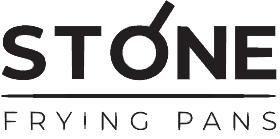Best Fat Free Butter Substitutes (And When To Use Them)
If you’re trying to lose weight, or just eat healthier to promote heart health, you may want to consider using a fat-free butter substitute. We use butter in baking, cooking, and spreading on toast, but butter isn’t great for your health or if you have a dairy allergy.
Butter has a high content of saturated fat – about 70 percent fatty acids and 25 percent monosaturated fatty acids. It also contains other fat, including cholesterol and phospholipids. One tablespoon of butter contains 100 calories, 11 grams of fat, and 7 grams of saturated fat, which is about half the amount of saturated fat recommended per day.

Fat-free butter substitutes are a good way to enjoy the benefits of butter without the high fat content. Switching from full fat to using fat-free butter substitutes is easy if you know what butter alternatives are available. Here’s the guide you need to find the best fat-free butter substitutes.
What are the benefits of a fat free butter substitute?
There are several benefits to using fat free butter substitutes:
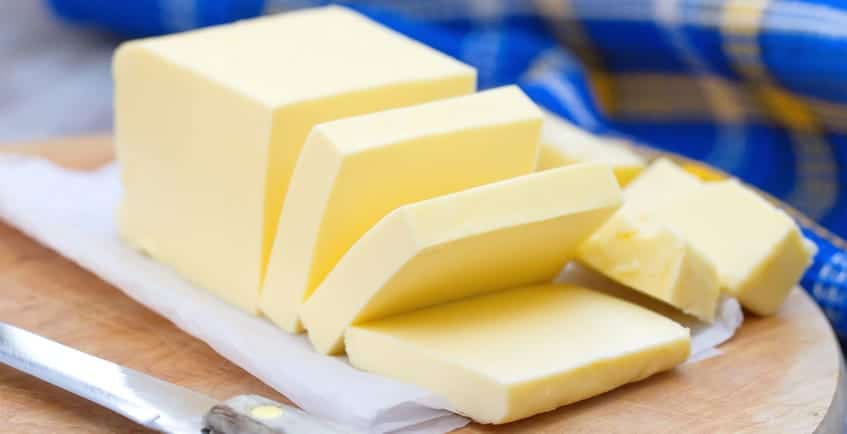
What is fat free butter?
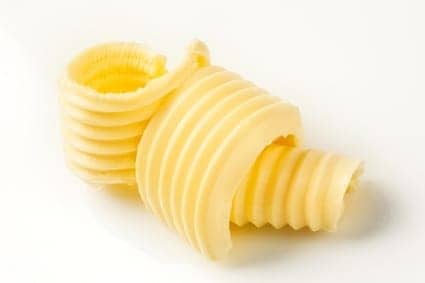
There are some options for butter alternatives that are free of trans-fats, which can be harmful to your health. Most of these alternatives will have some saturated fats, but the amount is minimal from 2.0 to 4.5 grams.
There are several different brands of spreadable butters available in most grocery stores. Most will have about half the amount of saturated fat as full butter. How are they able to significantly reduce the fat in these products? Some brands are made using canola or olive oil to make them spreadable while other brands use soybean oil or a blend of vegetable oils.
Choosing a spreadable fat free butter replacement lets you cut back on calories and unhealthy fats. Butter substitutes can also add healthy fats and added nutrition to your diet.
Is there a low-fat butter?
There are several different low-fat butter brands that you can choose from. They have a slightly higher saturated fat content than fat free butter but are still a good alternative to full fat butter.
Whipped butter is another alternative. Air is whipped into full fat butter to make it lighter and reduce the amounts of calories and fat. Whipped butter typically contains 70 calories, 7 grams of fat, and 5 grams of saturated fat per tablespoon, less than that of regular butter.
What is a healthy butter substitute?
There are several healthy butter substitutes that can be used for baking, cooking, and spreading. While some of these butter alternatives are still high in fat, they contain healthy fats that provide additional nutrition to your diet.
Half-the-fat butter
Although it still contains butter, spreadable butter is a blend of butter and vegetable oil.
With these spreads you’re getting half the saturated fat that you would using full butter.

Non-dairy butter spreads

There are many non-dairy butter spreads in every grocer store today. They typically have one main oil by which they’re advertised, such as a canola or olive oil spread. Most will then be blended with one or more other vegetable oils.
Check the label. Some non-dairy butter spreads still have some amounts of saturated and trans fats. Some contain healthier oil blends, reducing and eliminating unhealthy fats.
Vegan butter
Vegan butter is a good butter substitute. It has a taste and texture that’s almost exactly the same as full butter. It’s one of the most popular butter alternatives and is more affordable than other butter substitutes.
Some brands have more than one option, such as soy-free vegan butter, whipped, olive oil, or added omega-3. Vegan butter can be used as a substitute for butter on toast, for baking, or for sautéing.
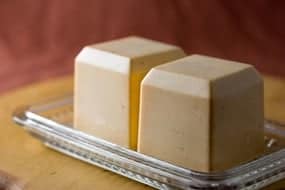
Coconut cashew spread
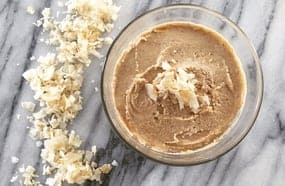
You can purchase or make you own coconut cashew spread.
The spread is made with the healthy combination of coconut oil and cashews, which gives it a rich and buttery taste.
Made with healthy fats, this spread is a good substitute for butter on bread – it’s also good for baking.
Butter sprays
Butter sprays are typically made with soybean oil, buttermilk, sodium, and butter flavoring. One spray has 1.0 calories and zero fat.
A butter spray can be a good fat free butter alternative when you want just a bit of buttery flavor on vegetables or popcorn.

Cocoa butter
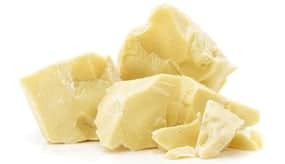
Cocoa butter is extracted from cocoa beans. Used to make chocolate, cocoa butter can also be used as a butter replacement in baking.
Considered to be a heathy fat, cocoa butter is also rich in antioxidants and polyphenols.
Shea butter
Shea butter isn’t just good for your skin when used in skincare products – it’s a good butter substitute as well.
High in Vitamin E, antioxidants, and essential fatty acids, shea butter can be used in baking and cooking.

Coconut oil

At room temperature, coconut oil becomes a solid so it can be used as a spread. The taste will be different than butter, with a slightly nutty flavor.
It can also be used in any recipe calling for butter – baking, cooking, and grilling. Coconut oil is healthy and cuts down saturated fats. Coconut oil is healthier for you than canola oil.
Coconut spread
Coconut spreads blend coconut oil with other vegetable oils.
These spreads are a good alternative to butter and per tablespoon contain about 50 to 100 calories and 7 to 11 grams of fat.
Look for organic coconut spreads that are flavored with honey and chocolate – you’ll be getting more calories, but these spreads have the sweetness of full butter.

Olive oil

Olive oil is a good, healthy substitute for butter. Olive oil may be high in calories, but its health benefits outweigh those calories. One tablespoon has 120 calories, 14 grams of fat, and 12 grams of unsaturated fat.
It contains no cholesterol or trans fats. You can use olive oil in place of butter when baking, frying, or sautéing foods. It can also be used on bread – toast, bagels, and garlic bread included.
Olive oil is also good when used in a spray bottle to lightly coat cooking and baking pans, adding a bit of moisture and a slightly buttery taste.
Avocado
Avocados are smooth and creamy, and full of minerals and vitamins. And they can be used to replace butter in many recipes. They contain healthy monosaturated fat which can help fight heart disease and lower your cholesterol.
One 3.5 oz. serving of avocado has only 14.6 grams of fat – the same portion of butter has 81 grams of fat. In baking, use mashed avocado to replace butter. Avocado is also good used as a spread on bread in place of butter.

Nut butters

Nut butters are a great alternative to dairy butter. They’re healthy, tasty, and don’t turn to solids when kept in the fridge so can easily replace butter as spreads on bread and crackers.
One ounce of almond butter has more total fat then butter, but almost all of that fat is monounsaturated fat and considered to be healthy for you.
As well, almond butter contains zero grams of cholesterol. Use almond and other nut butters not only as a spread, but in baking as well. Just reduce the amount of sweetener in the recipe as almond and other butters have a natural sweetness.
Other butter alternatives
Here are some other healthy butter substitutes that can be used when baking and cooking:
Fat free butter or margarine?
When it comes to which is better, fat free butter or margarine, fat free butter wins. When margarine is manufactured it goes through a hydrogenation process. Heat and hydrogen turn liquid oil into a solid.
Margarine has the same number of calories and fat in one tablespoon as butter does. Even though margarine doesn’t have any unsaturated fat or cholesterol, it does contain trans fats, which are bad for your heart health.
Even low fat margarine contains trans fats and isn’t a better substitute than fat free butter when you’re trying to cut back on fat and calories.
What are the categories of fat free butters and when to use them?
When it comes to fats, there are four categories you should be aware of. Depending on what ingredients they contain, fat free butter substitutes may still have one or more of these fats:
Saturated fats
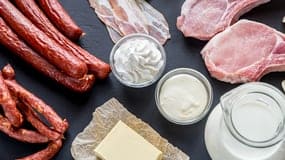
Saturated fats come from animal sources, including full fat dairy products such as cheese and butter. When at room temperature, saturated fats are in a solid form. Some saturated fats can be found in plant-based oils such as coconut, cocoa, and palm oils.
Choosing fat free butter alternatives can help you have less saturated fat in your diet.
Monounsaturated fats
Monosaturated fats are found in vegetable oils, such as peanut, olive, and canola oils. It’s also found in nuts and avocados.
Research shows that eating foods that are higher in monounsaturated fats and lower in saturated fats can help improve your cholesterol level. Lower cholesterol can lower your risk of heart disease as well as decrease the risk of developing type 2 diabetes.
Many fat free butter substitutes are made with monounsaturated fats – they can help you cut back on saturated fat.
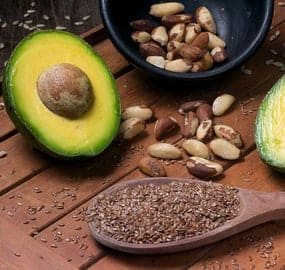
Polyunsaturated fats
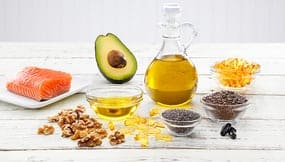
Polyunsaturated fats are mainly found in plant-based oils, such as soybean, sunflower, safflower, corn, and sesame. These fats are also found in seafood.
Studies show that foods that are high in polyunsaturated fats rather than saturated fats can lower bad cholesterol, promote good heart health, and lower your risk of type 2 diabetes.
Trans fats
Trans fats are oils that have been put through a processing method known as “hydrogenation”. The reason this process is used is to increase the shelf life of items that contain fat. Some food items that contain trans fats include margarine, salad dressings, processed foods, and foods that are made with partially hydrogenated oils and shortening.
Trans fats may significantly increase bad cholesterol levels, also known as LDL. This can increase your risk of heart disease. It’s recommended that you limit the amount of trans fats in your diet.

Bottom Line
With so many options, it’s not hard to find fat free butter substitutes. Whether you’re watching your weight or want to cut back on saturated and unhealthy fats, butter alternatives can let you bake and cook as though you were using butter.
